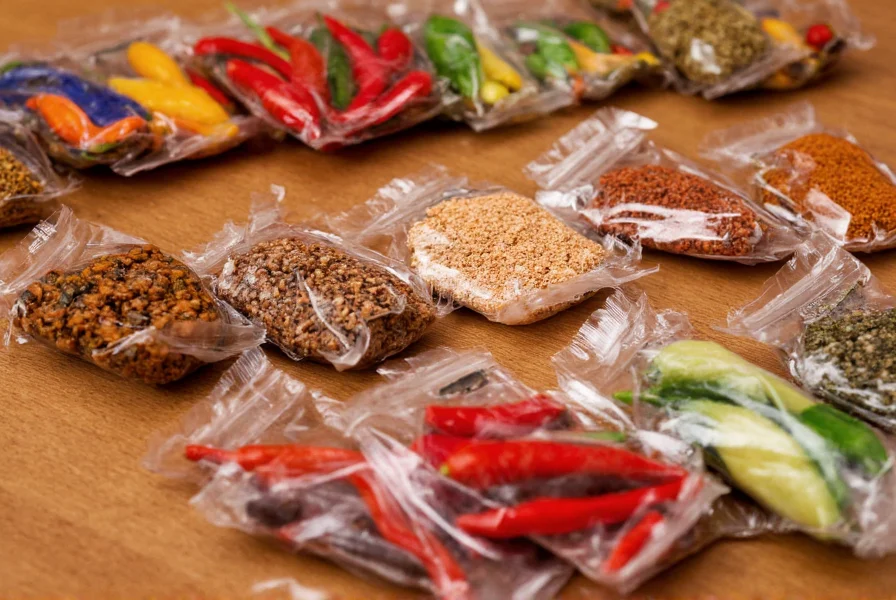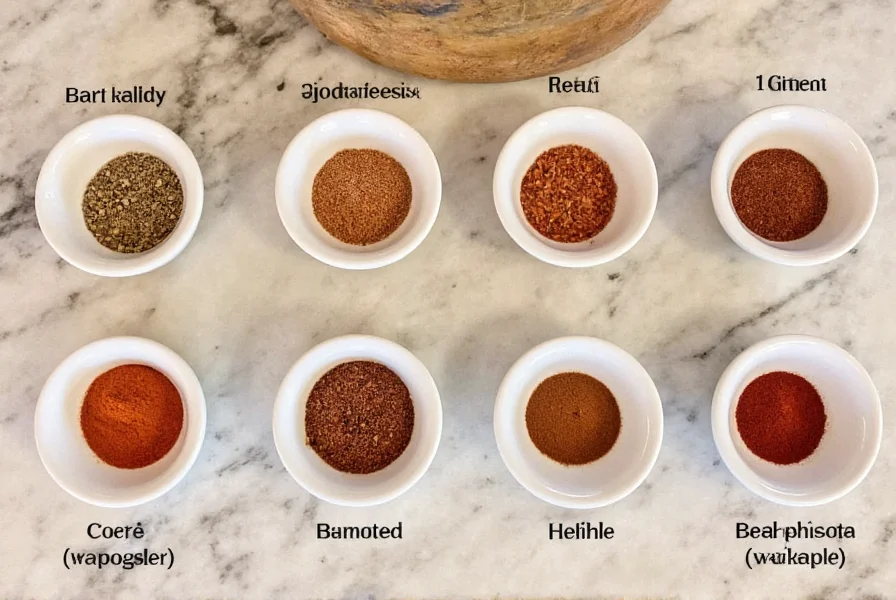Chili packets have become kitchen staples for home cooks seeking quick and consistent results when preparing this beloved American dish. Understanding their composition, proper usage, and alternatives can transform your chili-making experience from ordinary to exceptional.
What's Inside a Standard Chili Packet
Commercial chili seasoning packets typically contain a carefully balanced blend of dried spices designed to create that signature chili flavor profile. The core ingredients include:
| Primary Ingredients | Secondary Ingredients | Function |
|---|---|---|
| Ground chili peppers | Cornstarch | Provides heat and base flavor |
| Cumin | Sugar | Earthy, warm undertones |
| Garlic powder | Salt | Savory depth |
| Onion powder | Tomato powder | Sweetness and complexity |
| Paprika | Maltodextrin | Color and mild sweetness |
The precise ratios vary by brand, creating distinct flavor profiles that range from mild to extremely hot. Most standard packets contain approximately 2-3 tablespoons of seasoning mix, enough for 1-2 pounds of meat in traditional chili recipes.

Maximizing Flavor with Chili Packets
While convenient, many home cooks don't realize they can enhance store-bought chili packets for restaurant-quality results. Professional chefs often employ these techniques:
- Bloom the spices - Sauté the packet contents in oil for 1-2 minutes before adding liquids to deepen flavor
- Add fresh aromatics - Incorporate diced onions, garlic, and bell peppers before adding the seasoning
- Balancing acidity - A splash of apple cider vinegar or lime juice brightens the final dish
- Layering heat - Supplement with fresh jalapeños or a dash of cayenne for customized spice levels
For those wondering how to use chili packets beyond traditional chili con carne, consider these creative applications:
- Add to meatloaf or burger patties for Southwestern flavor
- Mix with olive oil for a quick taco meat seasoning
- Stir into soups and stews for instant depth
- Combine with mayonnaise for a spicy dipping sauce
- Sprinkle over roasted vegetables before baking
Creating Your Own Homemade Chili Packet Mix
When you need a chili packet substitute or prefer controlling ingredients, making your own blend offers superior freshness and customization. This basic recipe yields the equivalent of one commercial packet:
- 2 tablespoons chili powder
- 1½ teaspoons ground cumin
- 1 teaspoon garlic powder
- 1 teaspoon onion powder
- ½ teaspoon paprika
- ¼ teaspoon cayenne pepper (adjust to taste)
- ½ teaspoon oregano
- 1 teaspoon salt
- ½ teaspoon black pepper
Store your homemade chili packet mix in an airtight container for up to six months. For authentic regional variations, consider these adjustments:
- Texas-style: Increase cayenne and omit paprika for pure meat-focused heat
- Cincinnati-style: Add ½ teaspoon cinnamon and a pinch of allspice
- Green chili version: Replace chili powder with 2 tablespoons ancho chili powder

Storage and Shelf Life Considerations
Proper storage significantly impacts the potency of both commercial and homemade chili packets. Most store-bought packets maintain optimal flavor for 18-24 months when unopened and stored in a cool, dark place. Once opened, transfer contents to an airtight container to preserve freshness.
Homemade chili packet mixes typically last 3-6 months before noticeable flavor degradation occurs. For extended shelf life, store in the refrigerator or freezer. Signs your chili packet has lost potency include:
- Faded color (spices should be vibrant, not dull)
- Weak aroma when opened
- Flat or one-dimensional flavor in finished dishes
Common Substitutions When You're Out of Chili Packets
Running out of chili packets doesn't mean canceling dinner plans. Several effective substitutions maintain the essence of chili flavor:
- Taco seasoning alternative - Use 1½ tablespoons taco seasoning plus ½ teaspoon cumin
- From scratch solution - Combine 2 tbsp chili powder, 1½ tsp cumin, 1 tsp garlic powder
- Bean-based shortcut - Use 1 cup chili beans with liquid plus 1 tsp cumin
- International twist - Substitute with 2 tbsp adobo sauce for smoky complexity
When substituting, remember that chili packets contain salt, so adjust additional seasoning accordingly. For those seeking low-sodium options, create your own mix without added salt and control sodium levels separately.
Understanding Regional Chili Packet Variations
Chili seasoning packets vary significantly by region and brand, reflecting different interpretations of this American classic. Major distinctions include:
- Midwestern packets - Typically sweeter with tomato components
- Southern varieties - Often include more cumin and less heat
- Southwestern brands - Feature pronounced heat and smokiness
- International versions - May incorporate local spices like smoked paprika or chipotle
Reading ingredient labels helps identify these regional characteristics. For authentic results, match your packet choice to the chili style you're preparing rather than using whatever's available.
Can I use taco seasoning instead of chili packet?
Yes, you can substitute taco seasoning for chili packet with adjustments. Use 1½ tablespoons taco seasoning plus ½ teaspoon additional cumin to approximate chili packet flavor. Remember that taco seasoning typically contains more oregano and less cumin than chili packets, so this adjustment helps recreate the proper flavor balance.
How long do chili packets last after opening?
Opened chili packets maintain optimal flavor for 6-12 months when stored properly in an airtight container away from heat and light. Commercial packets often contain anti-caking agents that extend shelf life compared to homemade mixes. Discard if the spices appear faded, lack strong aroma, or produce flat-tasting results.
What's the difference between chili powder and chili packet?
Chili powder is a single ingredient consisting primarily of ground dried chili peppers, while a chili packet contains a complete seasoning blend with multiple spices including chili powder, cumin, garlic powder, onion powder, and often salt and thickening agents. A typical chili packet equals about 2-3 tablespoons of seasoning mix designed specifically for chili recipes.
Can I make a low-sodium chili packet substitute?
Absolutely. Create your own low-sodium blend using 2 tablespoons chili powder, 1½ teaspoons cumin, 1 teaspoon garlic powder, 1 teaspoon onion powder, ½ teaspoon paprika, and ¼-½ teaspoon cayenne pepper. This homemade version contains no added salt, allowing you to control sodium levels separately based on dietary needs.
Why does my chili taste bitter when using store-bought packets?
Bitterness often occurs when chili packets are added directly to cold liquids without blooming the spices. To prevent this, sauté the seasoning mix in oil or with aromatics for 1-2 minutes before adding liquids. This process, called blooming, releases essential oils and eliminates raw, bitter notes while enhancing overall flavor complexity.











 浙公网安备
33010002000092号
浙公网安备
33010002000092号 浙B2-20120091-4
浙B2-20120091-4